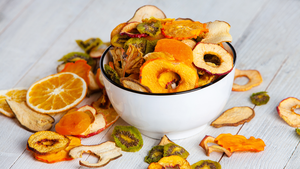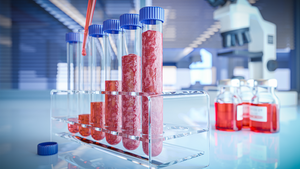3D-printed meat technology advances alt-protein category
Steakholder Foods strives to make meat more sustainable using 3D-printing technology. Learn more about the technology behind 3D-printed meat from the company’s CEO.

At a Glance
- Steakholder Foods, an Israel-based food tech company, developed 3D-printing technology that can create meat products.
- The company partnered with Umami Meats Pte Ltd to print the first ready-to-cook (RTC) cultivated grouper fish product.
- The company’s 3D-printing technology could solve a key issue facing conventional lab-cultivated meat products: scalability.
The alternative meat landscape continues to widen with new technologies that aim to reduce the environmental impact of traditional meat. Enter an emerging technology: 3D-printed meat.
Plant-based alternatives to conventional meat and dairy products have seen an explosion in innovation and consumer adoption in recent years. In fact, sales of plant-based meat alternatives outpaced meat sales nearly three-fold over the past three years, with a 74% growth in sales. In 2021, the plant-based meat category reached sales of $1.4 billion.
Despite the popularity of plant-based alternatives, most consumers aren’t willing to part with their favorite meat-based meals.
To keep efforts for more sustainable meat production rolling forward, a surge of innovations have emerged, from lab-grown meat to precision fermentation-derived dairy and “meaty corn.”
Adding to the array of technological advancements that boast the ability to provide real meat—without the use of real animals—is 3D-printing technology from Israel-based food tech company Steakholder Foods.
In April, the company printed the first RTC cultivated grouper fish product, in partnership with Umami Meats Pte Ltd. As part of the partnership, Umami Meats provided grouper cells that were used by Steakholder Foods to create the bio-inks needed for the printing process. Steakholder Foods’ 3D printer was used to print the fish product.
The company declined to confirm whether it’s had success 3D printing other types of fish or meat products.
According to Arik Kaufman, CEO of Steakholder Foods, the process of 3D printing meat and fish starts with the company’s bio-inks. They are made from plant-based ingredients and “serve as a platform for cultivated ingredients,” he explained.
The bio-inks are then used by the printer to create a structured product based on a digital design. The printing process takes “just a matter of minutes,” Kaufman said.
Unlike fully cultivated meat products, Steakholder Foods’ printed products don’t require incubation and maturation after printing, which means the end product is ready to cook immediately after printing.
The technology could solve a key issue facing conventional lab-cultivated meat products: scalability. Steakholder Foods’ 3D-printing technology can create meat structures in high accuracy at commercial scale, Kaufman said.
“The potential of cell-cultivated proteins to revolutionize the future of food is intrinsically linked to the concept of scalability and commercialization,” he explained. Steakholder Foods can achieve scale by producing “hybrid products.” Hybrid end products include cultivated cells and require cell harvesting and growth prior to the ink formulation.
“Through our proprietary 3D-bioprinting technology, we’ve developed a method to create structured meat products with intricate textures and mouthfeel that consumers expect from traditional meat,” he explained. “The real game-changer, however, is our ability to flexibly adjust the cellular content in these printed products.”
That’s because producing 100% cell-based meat at scale is costly—and a critical barrier keeping cultivated meat products from large-scale production.
“By starting with products containing a lower percentage of cultivated cells mixed with plant-based ingredients, we can provide consumers with a meat experience that’s ethically produced and has a reduced environmental footprint,” Kaufman said.
The process of 3D printing also improves lab-cultivated meat products. According to Kaufman, the technology enables the creation of complex 3D products that mimic conventional meat in terms of texture, taste and appearance. “The unique 3D-printing process gives the product its unique texture,” he said.
About the Author(s)
You May Also Like






